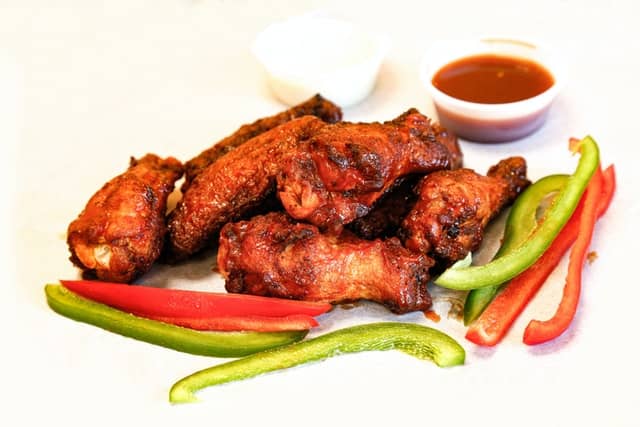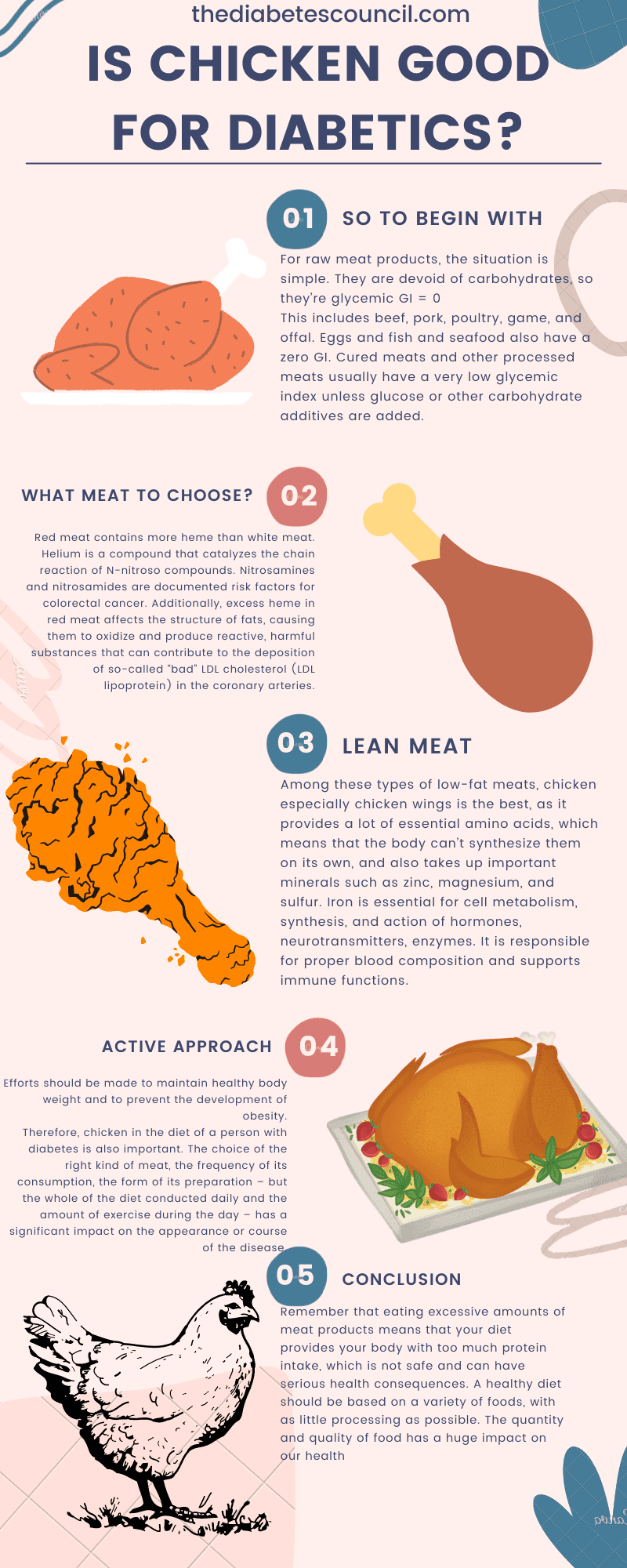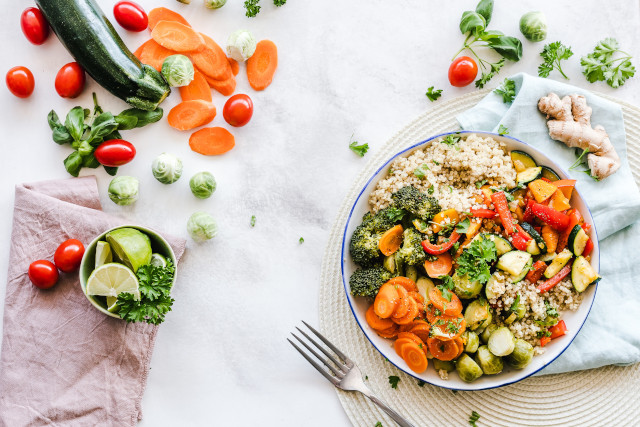
Probably everyone likes to eat deep-fried, smoked, well-salted food. with a fresher beer. We often use ready-made, highly processed meat products, such as sausages, bacon, pâté, minced meat, sausages, etc. These products are high in animal fat and thus high in saturated fatty acids. It is these components that increase the concentration of cholesterol in the blood and aggravate the development of atherosclerosis or cardiovascular disease.
The high-fat content also makes the caloric content of these products high, which promotes overweight and obesity. Other ingredients that hurt health are a large amount of salt and additives such as preservatives, protein substitutes, and fillers. Meat contains a lot of unhealthy fat, but it is also a great source of valuable protein and iron. It is worth eating, but not all of it.
Diabetes belongs to the group of metabolic diseases. Diseases from this group are characterized by an increased level of glucose in the blood. Cells secreted by the pancreas are damaged and produce less insulin. Dietary rules for people with diabetes must be followed. Meat and cold cuts in a diabetic diet are very important.
Are diabetics allowed to eat them at all? Are your meats and cured meats allowed in the diabetic diet or are they forbidden? All this will be discussed in a moment. Diabetics are allowed to eat meat, but they shouldn't do it too often. The most important thing is the amount. And it is recommended that a daily diabetic diet should contain a maximum of one hundred to one hundred and fifty grams of meat. This dose also includes cured meats, that is, all kinds of hams, tenderloins, sausages, or even cabanas.
Even in diabetes, meat products should not be completely avoided. They are one of the better sources of protein, and they are also one of the few foods that contain almost all of the B vitamins. It is true that meat also contains some fat, but it is because of fat that it can satisfy the appetite wonderfully.
Dinner consisting of only vegetables and pasta will certainly not be as filling as a portion of chicken with broccoli and rice. Meat and cured meats are allowed on a diabetic diet, but you should be careful what kind you include in your daily diet.
It is therefore important to remember how and how much you eat and to be aware of what you are doing. Excessive consumption can damage or even jeopardize your health.
So to Begin With

For raw meat products, the situation is simple. They are devoid of carbohydrates, so they're glycemic GI = 0
This includes beef, pork, poultry, game, and offal. Eggs and fish and seafood also have a zero GI. Cured meats and other processed meats usually have a very low glycemic index unless glucose or other carbohydrate additives are added.
Remember that eating excessive amounts of meat products means that your diet provides your body with too much protein intake, which is not safe and can have serious health consequences. A healthy diet should be based on a variety of foods, with as little processing as possible. The quantity and quality of food has a huge impact on our health
Salt raises blood pressure, so it should be avoided (many diabetics suffer from hypertension). Salt can be easily replaced (at least partially) with marjoram, caraway seeds, juniper berries, basil, and lovage. Meals prepared this way will not only be tastier but also healthier.
What Meat to Choose?

An incorrect diet can lead to blood sugar jumps. There are four types of diabetes: type one diabetes, type two diabetes, gestational diabetes, and specific types of diabetes. In all types of diabetes, diet plays an important role. The time and hour of eating are very important. You should have a set time for each meal and follow a few dietary rules
People with the disease must limit the intake of simple sugars and saturated fats. Meat and cold cuts in a diabetic diet are an essential part of the diet. Meat must not be fatty. Animal proteins recommended in the diet are beef, veal, chicken, rabbit, and turkey. Poultry should be eaten without the skin. Meat and meats in a diabetic diet are a source of zinc, iron, B vitamins, and protein. Animal proteins have only a minimal effect on blood sugar levels.
Untreated diabetes leads to damage and failure of various internal organs. It interferes with their proper functioning. Diabetic patients can take advice from a nutritionist or participate in diabetic cooking workshops. They can also take help from a nutrition clinic. A specialist will help them choose the right diet.
He will answer questions about what meat and cold cuts can be eaten in a diabetic diet. In addition to meat, they should eat vegetables, eggs, fish, and cheese. Avoid alcoholic beverages, mayonnaise, and sweets
Lean meat is recommended above all. This involves cutting off visible pieces of fat from meat and choosing lean meats, giving up bacon, pork knuckle, and offal, as well as sausages, mortadella, and sausages made of minced meat. We should remember that the use of an appropriate technological process makes cold cuts contain fat, which is not visible on the surface.
The division of meat into white and red raises many doubts. Why do nutritionists classify turkey thighs as white meat, although it has a dark color? Nutritionists divide the meat into white and red, taking into account the content and type of fat.
Animal meats differ in their content of individual nutrients, including fat or heme pigment, which is responsible for red coloration. Red meat includes beef, pork, lamb, veal, venison, horse meat, kidney, and mutton, while white meat includes: turkey, chicken, rabbit. Red meat is characterized by a higher content of fat, including saturated fat. The amount of fat affects the calorie content of meat. When eating meat, try to choose portions with as little fat as possible. The amount of protein is similar in all types of meat.
Red meat contains more heme than white meat. Helium is a compound that catalyzes the chain reaction of N-nitroso compounds. Nitrosamines and nitrosamides are documented risk factors for colorectal cancer. Additionally, excess heme in red meat affects the structure of fats, causing them to oxidize and produce reactive, harmful substances that can contribute to the deposition of so-called "bad" LDL cholesterol (LDL lipoprotein) in the coronary arteries.
This causes narrowing of the lumen of the arteries, blocks the oxygen supply to the heart, and can cause a heart attack. Meat products are 100-150 g per day. It is a good source of protein, as well as iron, zinc, and B vitamins. Eating meat has only a minimal effect on blood sugar levels.
Lean Meat

Among these types of low-fat meats, chicken especially chicken wings is the best, as it provides a lot of essential amino acids, which means that the body can't synthesize them on its own, and also takes up important minerals such as zinc, magnesium, and sulfur. Iron is essential for cell metabolism, synthesis, and action of hormones, neurotransmitters, enzymes. It is responsible for proper blood composition and supports immune functions.
Meat is best cooked (in water, steam, or in a cooking vessel without water, salt, and fat), baked (in a heatproof dish, foil, or foil sleeve), or stewed (without being fried first).
Meat and vegetable dishes (with a predominance of vegetables) are especially recommended for diabetics, e.g. meat stewed with various vegetables, tomatoes, squash, or zucchini stuffed with meat. Vegetables enrich the dish with antioxidant vitamins, i.e. vitamin E, C, and beta-carotene, which protect the "bad" LDL cholesterol from oxidation, and this weakens its ability to cause atherosclerosis. Vitamin C, contained in many vegetables (such as cabbage, peppers, broccoli, cauliflower, tomatoes), increases the bioavailability of iron.
And how should meat dishes be prepared on a diabetic diet? The best method of thermal processing for them will be, of course, cooking, or steaming. You can also roast meat in the oven, laying its slices on baking paper or putting them in a heatproof dish and surrounding them with colorful vegetables. Only frying is not recommended. This thermal treatment releases a large number of toxic substances, which can cause cancer.

Active Approach

Dietary recommendations in type 2 diabetes are based on the principles of healthy eating and regular physical activity, adapted to the body's capacity. Efforts should be made to maintain healthy body weight and to prevent the development of obesity. For people with type 2 diabetes, it is important not to lead to complications of diabetes, such as diabetic foot, loss of vision, kidney failure, hyperglycemia, or ketoacidosis.
Therefore, chicken in the diet of a person with diabetes is also important. The choice of the right kind of meat, the frequency of its consumption, the form of its preparation - but the whole of the diet conducted daily and the amount of exercise during the day - has a significant impact on the appearance or course of the disease.





